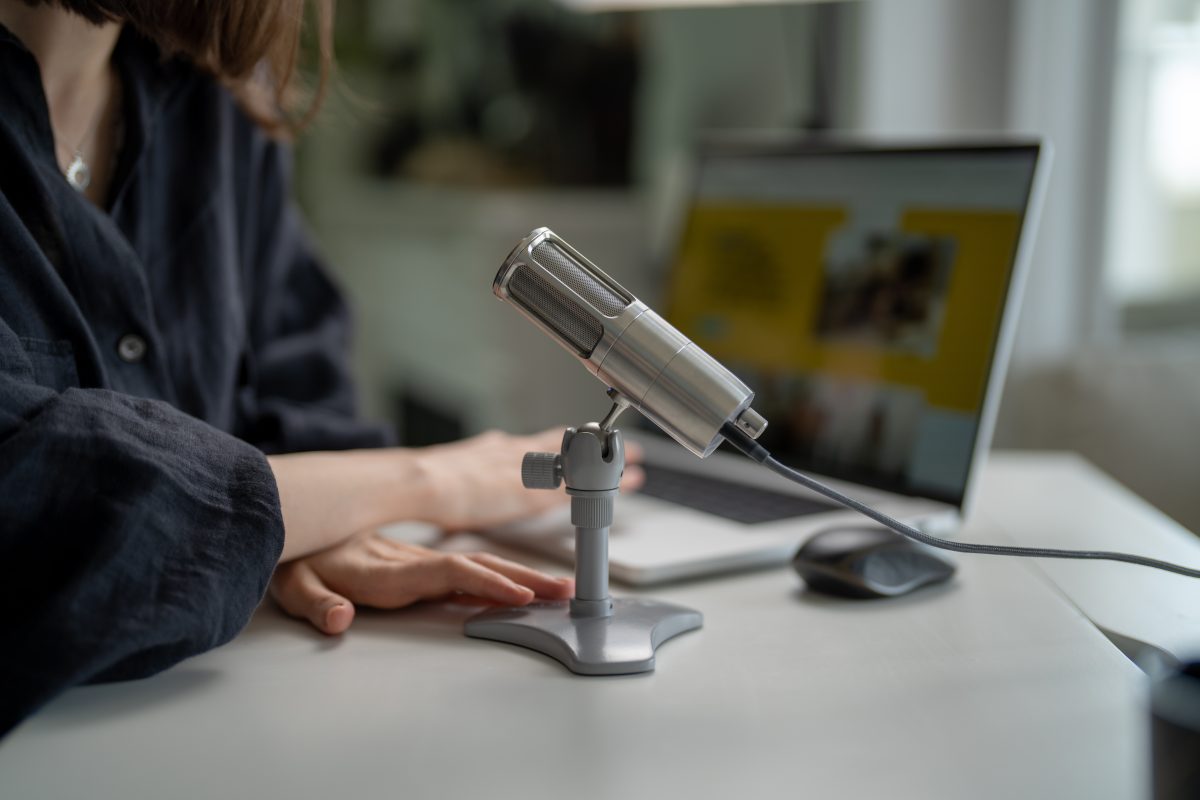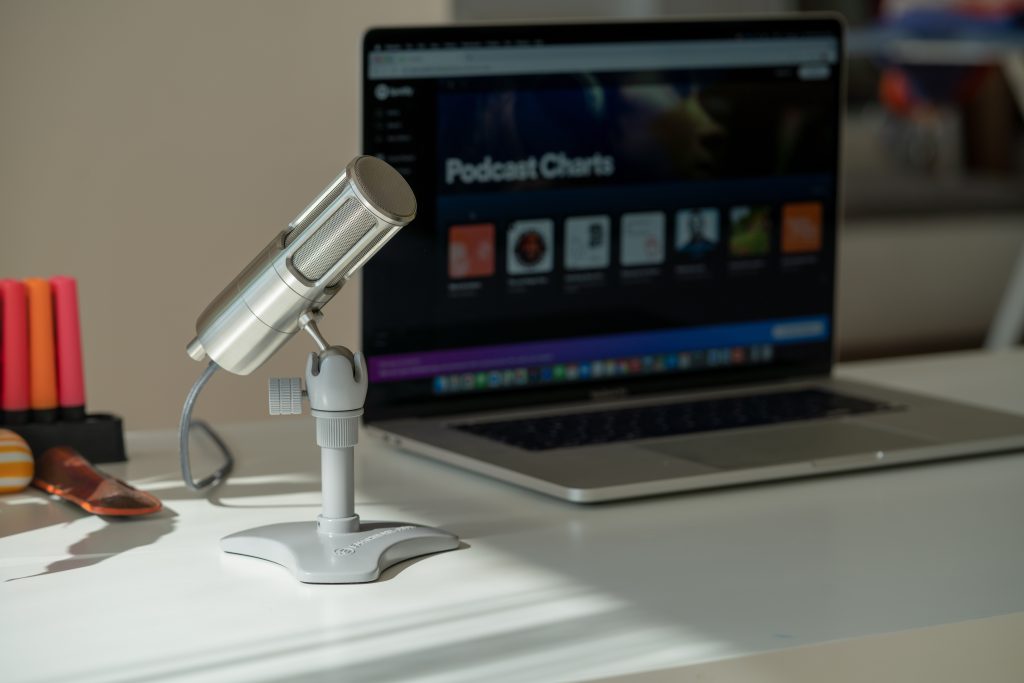Hey there, music enthusiasts! Are you ready to dive into the world of USB microphones and unlock their secrets? Curious about what sets them apart from traditional XLR microphones? Let’s embark on a sonic journey together and discover the wonders of USB microphones. So, have you ever wondered what exactly is a USB microphone?
What exactly is a USB microphone? A USB microphone is a type of microphone that utilizes a transducer element with a moveable diaphragm and a USB output, offering a convenient and accessible way to capture audio without the need for additional audio interfaces or complicated setups.
How do USB microphones work?
USB microphones are a hot topic in the music production world, but have you ever wondered how these nifty devices actually work? Well, let’s break it down for you!

First off, USB microphones utilize electret condenser capsules to capture audio with exceptional clarity and precision. These capsules consist of a diaphragm that moves in response to sound waves, converting them into electrical signals. It’s like having a tiny but powerful sound-capturing superhero right at your fingertips!
To make the magic happen, USB microphones also employ active impedance converters. These converters drop the output signal impedance of the capsule, ensuring a smooth and balanced audio signal that’s ready to rock your digital recordings.
AKAI Professional MPK Mini MK3

AKAI Professional MPK Mini MK3
What are the types of microphone transducers?
USB microphones offer versatility when it comes to the type of sound they can capture. Moving-coil dynamic, condenser, and ribbon microphone transducers can all be found in the realm of USB microphones. Each type brings its own unique flavor to the table, catering to different recording needs.
- Moving-coil dynamic microphones: These are robust and great for capturing live performances or instruments with a lot of power, like drums or electric guitars. They can handle high sound pressure levels without breaking a sweat, making them perfect for those intense rock moments!
- Condenser microphones: Condenser microphones are more sensitive and deliver exceptional detail and accuracy. They excel at capturing delicate vocals, acoustic instruments, and subtle nuances that can make your recordings shine like a diamond.
- Ribbon microphones: Ribbon microphones offer a vintage touch. They have a smooth, warm sound and are fantastic for adding a touch of nostalgia to your tracks or capturing the unique character of brass instruments.
So, whether you’re rocking out or seeking pristine audio quality, USB microphones have got you covered with their diverse range of transducer types. Now, let’s move on to explore sample rates and bit depths in our next segment!

What are sample rates and bit depths?
When it comes to sample rates and bit depths, it’s essential to find the right balance for your recordings.
Sample rates
When it comes to USB microphones, sample rates play a crucial role in determining the quality and fidelity of your audio. Sample rate refers to the number of audio samples captured per second, and it is typically measured in kilohertz (kHz). USB microphones commonly support sample rates of 44.1 kHz, 48 kHz, 88.2 kHz, and 96 kHz.
The higher the sample rate, the more accurately your recordings will capture the nuances and details of your sound. It’s like having a high-speed camera for your audio, capturing every beat and note with precision.
Bit depth
Bit depths determine the dynamic range and resolution of your audio recordings. In USB microphones, common bit depths include 16-bit and 24-bit. The bit depth represents the number of bits used to store each audio sample. A higher bit depth provides a wider dynamic range, allowing for a more accurate representation of soft and loud sounds. It’s like having a canvas with more colors to paint your sonic masterpiece!
A higher bit depth provides a wider dynamic range, allowing for a more accurate representation of soft and loud sounds.
Higher sample rates and bit depths offer more fidelity and detail, but they also require more storage space and processing power. It’s like finding the perfect rhythm for your music, where you can unleash your creativity without overwhelming your computer’s resources. Remember, it’s all about finding the sweet spot that suits your artistic vision!
Dos and Don’ts for Sample Rates and Bit Depths in USB Microphones:
| Dos | Don’ts |
|---|---|
| Do experiment with different sample rates to find your ideal balance of audio quality and file size. | Don’t blindly use the highest sample rate and bit depth without considering their impact on storage and processing. |
| Do consider the nature of your recordings and the intended output when selecting sample rates and bit depths. | Don’t assume that higher sample rates and bit depths automatically mean better sound quality in all situations. |
| Do optimize your settings based on the capabilities of your USB microphone and the specifications of your recording environment. | Don’t overlook the importance of proper gain staging and microphone placement in achieving optimal results. |
By understanding sample rates and bit depths, you’ll have the tools to make informed decisions and elevate your audio recordings to the next level. Now, let’s uncover the fascinating world of USB audio transfer in our next section!
How do USB microphones transfer audio to your computer?
USB microphones are equipped with a USB output that allows them to connect directly to your computer. This connection enables seamless digital communication between the microphone and your recording software. It’s like having a direct hotline between your microphone and your creative command center!
When it comes to the actual audio transfer, USB microphones utilize a mode called isochronous transfer. This transfer mode ensures a continuous and real-time flow of audio data from the microphone to your computer.
What is Scarlett 2i2?
The Scarlett 2i2 acts as a bridge between your USB microphone and your computer, facilitating digital communication and enhancing the audio quality of your recordings. It offers a range of input and output options for microphones, instruments, headphones, and monitors. It’s like having a versatile Swiss Army knife in your music production arsenal!
With the Scarlett 2i2, you can enjoy low-latency monitoring, high-quality audio conversion, and flexible control over your recording sessions. It’s the perfect sidekick for bringing your USB microphone recordings to life with professional-grade results. So, whether you’re a seasoned producer or just starting your audio engineering journey, the Scarlett 2i2 has got your back!
USB Microphone Comparison
Here’s a handy comparison table that highlights key features and specifications of popular USB microphones:
| USB Microphone | Transducer Type | Sample Rates (kHz) | Bit Depths | Connectivity | Popularity |
|---|---|---|---|---|---|
| Blue Yeti | Condenser | 48, 96 | 16, 24 | USB | Very popular |
| Rode Podcaster | Dynamic | 44.1 | 16 | USB | Widely used |
| Shure MV5 | Condenser | 48 | 24 | USB, Lightning (iOS) | Popular choice |
| MXL UR-1 | Ribbon | 44.1, 48 | 16 | USB | Unique option |
This table provides a snapshot of popular USB microphones, showcasing their transducer types, sample rates, bit depths, connectivity options, and popularity among users. The data was collected from various reliable sources within the music production and audio engineering community.
Caption: A comparison table highlighting key features and specifications of popular USB microphones.
Advantages and disadvantages of using USB microphones
USB microphones offer convenience and versatility, but like any technology, they come with their own set of pros and cons. Let’s take a closer look at the advantages and disadvantages of using USB microphones for your recording endeavors.
Advantages
USB microphones have gained popularity for several reasons. Here are some key advantages:
- Ease of use: USB microphones provide a hassle-free setup, allowing you to plug directly into your computer without the need for additional audio interfaces.
- Portability: USB microphones are often compact and lightweight, making them a great choice for musicians on the go or those with limited space.
- Affordability: Compared to traditional XLR microphones and audio interfaces, USB microphones are generally more budget-friendly, making them accessible to a wider range of users.
- Convenience: USB microphones offer quick and straightforward connectivity, making them ideal for podcasters, content creators, and home recording enthusiasts.
Disadvantages
While USB microphones have their advantages, it’s important to consider the potential drawbacks:
- Limited upgradability: USB microphones are designed as all-in-one solutions, which means they may have limitations when it comes to customization and future upgrades.
- Complications in professional workflows: USB microphones can pose challenges when integrating with complex recording setups or when consolidating audio files for final mixes.
- Audio quality limitations: While USB microphones can deliver impressive results, they may not offer the same level of audio quality and versatility as higher-end XLR microphones.
It’s essential to weigh these pros and cons against your specific needs and goals to determine if a USB microphone is the right choice for you. Remember, every tool has its strengths and limitations, so choose wisely to ensure your recordings soar to new heights!
If you want even more great tips and information, check out the video below.
Frequently Asked Questions (FAQ)
Got questions about USB microphones? We’ve got you covered! Check out these frequently asked questions:
How do I connect a USB microphone to my computer?
Connecting a USB microphone is as easy as pie! Simply plug the USB cable from your microphone into an available USB port on your computer. The operating system will detect the microphone, and you’ll be ready to start recording in no time. No additional drivers or complex setups are required!
Can I use a USB microphone with my smartphone or tablet?
Most USB microphones are designed to work with computers and may not be directly compatible with smartphones or tablets. However, there are some USB microphones specifically designed for mobile devices that feature Lightning or USB-C connectors. Make sure to check the compatibility of the microphone with your specific device before making a purchase.
Can I use a USB microphone for professional studio recordings?
USB microphones are an excellent choice for home recordings, podcasting, streaming, and content creation. However, for professional studio recordings, where maximum flexibility and control are required, XLR microphones and dedicated audio interfaces are often preferred. It’s essential to assess your specific recording needs and the desired level of audio quality when choosing a microphone setup.
Conclusion
That’s a wrap on our USB microphone adventure! We’ve explored the ins and outs of these handy devices, from understanding their inner workings to discovering their pros and cons. So, whether you’re a budding musician, podcaster, or content creator, USB microphones offer a convenient and accessible solution to capture your sound. So, grab your USB microphone, plug it in, and let your voice be heard!
Let me know if you have any questions in the comments section below (I read and reply to every comment). If you found this article helpful, share it with a friend, and check out my full blog for more tips and tricks on music production and audio engineering. Thanks for reading, and rock on!
Key Takeaways
This article covered the topic of USB microphones and their features. Here are some key takeaways:
- USB microphones are popular alternatives to XLR microphones due to their ease of use and affordability.
- They utilize transducer elements with moveable diaphragms and USB outputs for convenient connectivity.
- USB microphones use electret condenser capsules and active impedance converters for optimal audio capture.
- Sample rates and bit depths impact the quality and fidelity of USB microphone recordings.
- USB microphones employ an isochronous transfer mode for seamless audio communication.
- The Scarlett 2i2 interface enhances the capabilities of USB microphones.
- USB microphones offer advantages such as ease of use, affordability, and convenience.















